A research team studying the Poás volcano in Costa Rica, a potential analog for early Mars conditions, finds microbes surviving in extremely harsh conditions. Plus, table-top matter-antimatter experiments, an exoplanet’s complex atmosphere, and how snails and squirrels can help us understand space.
Podcast
Show Notes
Tabletop, matter-antimatter experiment
- The University of Manchester press release
- “Out-of-equilibrium criticalities in graphene superlattices,” Alexey I. Berdyugin et al., 2022 Jan 27, Science
Extreme exoplanet’s atmosphere is layered
- University of Bern press release
- “Titanium oxide and chemical inhomogeneity in the atmosphere of the exoplanet WASP-189 b,” Bibiana Prinoth et al., 2022 January 27, Nature Astronomy
Machine learning helps find meteorites
- Machine learning points to prime places in Antarctica to find meteorites (Science News)
- “Unexplored Antarctic meteorite collection sites revealed through machine learning,” Veronica Tollenaar et al., 2022 January 26, Science Advances
One image, two very different craters
- ESA press release
Microbes survive harsh early-Mars analog conditions
- Extremely harsh volcanic lake shows how life might have existed on Mars (EurekAlert)
- “Microbial Survival in an Extreme Martian Analog Ecosystem: Poás Volcano, Costa Rica,” Justin L. Wang, Nicholas B. Dragone, Geoffroy Avard and Brian M. Hynek, 2022 January 28, Frontiers in Astronomy and Space Sciences
The snails said the theory is wrong
- UTA press release
- “Bioindicators of severe ocean acidification are absent from the end-Permian mass extinction,” William J. Foster et al., 2022 January 24, Scientific Reports
Squirrels help provide clues for long-duration spaceflight
- University of Montreal press release
- “Nitrogen recycling via gut symbionts increases in ground squirrels over the hibernation season,” Matthew D. Regan et al., 2022 January 27, Science
Transcript
We’ve got an exciting show today that wanders the universe and includes everything from researchers creating table-top matter-antimatter experiments – perfect for trying to destroy the universe from your kitchen table – to complex atmospheres surrounding far-off distant worlds.
Plus, we focus on craters on Mars, how they tell us the history of the red planet, and how volcanic ones might have managed to contain life.
And snails and squirrels. We also have space science-related results brought to us from snails and squirrels. The universe is weird, and we are here to bring it all to you.
I’m Dr. Pamela Gay.
And I’m Beth Johnson.
And we’re here to put science in your brain, right here on the Daily Space.

It’s science fair season, and right now, all across the U.S., kids are doing what may or may not actually be science in their kitchens and at their dining room tables. What makes something actually science is more a matter of “were the results measured and documented” than “did they follow the scientific method?” This is something I wish more folks understood, and it is something the science paper I’m about to discuss exemplifies in a way that makes me giggle.
I’m just going to start by reading some quotes from the scientists. Alexey Berduygin says: People usually study the electronic properties using tiny electric fields that allow easier analysis and theoretical description. We decided to push the strength of electric fields as much as possible using different experimental tricks not to burn our devices,”
Basically, they turned their device up to eleven.
Collaborator Na Zin adds: We just wondered what could happen at this extreme. To our surprise, it was the Schwinger effect rather than smoke coming out of our set-up.
That Schwinger effect? That means they randomly caused particle-antiparticle pairs to spontaneously form out of a vacuum the electric field was formed in. This is the kind of thing that normally only happens in high-energy environments in space.
Collaborator Roshan Krishna Kumar continues: When we first saw the spectacular characteristics of our superlattice devices, we thought ‘wow … it could be some sort of new superconductivity’. Although the response closely resembles that routinely observed in superconductors, we soon found that the puzzling behavior was not superconductivity but rather something in the domain of astrophysics and particle physics. It is curious to see such parallels between distant disciplines.
Put another way, this team took a “muck about and find out” approach to doing science, and while cranking as large an eclectic field through their system as they could, instead of destroying it as they thought might happen, they discovered a way to do particle physics. Their device is described in the related press release as having narrow constrictions and superlattices made from graphene, which allowed the researchers to achieve exceptionally strong electric fields in a simple, table-top setup.
This work appears in the journal Science in a paper led by Berduygin that is going to have me giggling for the rest of the day.
By the way, you can’t yet get the graphene parts they used down at Home Depot, so your kid can’t replicate these results on their own, yet. They also cannot, thank goodness, replicate the atmosphere of the exoplanet in our next story.
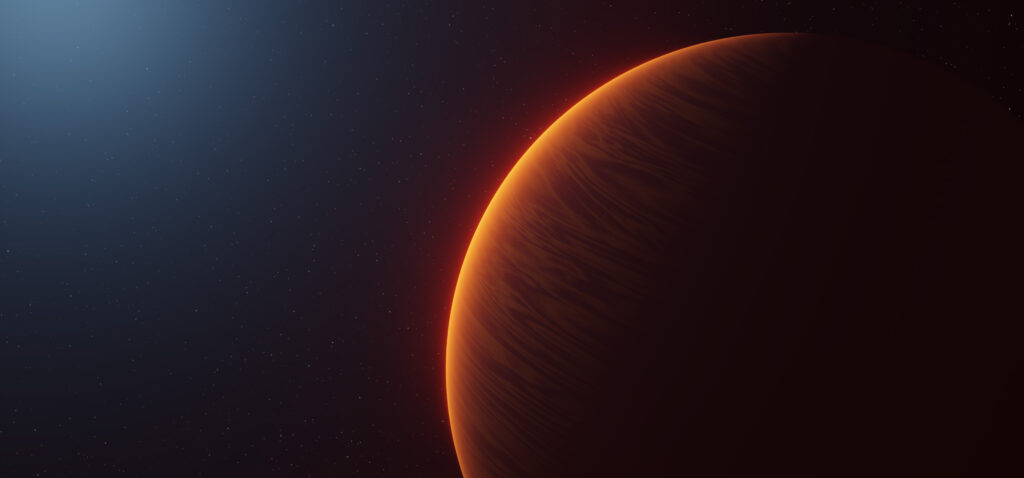
WASP-189b is a hot Jupiter in a star system more than 300 light-years away from Earth. It’s twenty times closer to its star than we are to the Sun, and daytime temperatures can soar up to 3,200 degrees Celsius. And since everyone wants to understand exoplanet atmospheres now, and JWST still isn’t collecting data, yet, researchers turned to the HARPS spectrograph in Chile to analyze this planet.
Lead author of a new study in Nature Astronomy, Bibiana Prinoth, explains: We measured the light coming from the planet’s host star and passing through the planet’s atmosphere. The gases in its atmosphere absorb some of the starlight, similar to Ozone absorbing some of the sunlight in Earth’s atmosphere, and thereby leave their characteristic ‘fingerprint’. With the help of HARPS, we were able to identify the corresponding substances.
And they found titanium oxide, which is kind of a wild result, but it could play a similar role to our own ozone layer, blocking some of the stellar radiation. Just as interesting, they found that the fingerprints of the gases were slightly altered in different ways, which could indicate the existence of atmospheric layers, similar to what we have here on Earth except for being Jupiter-like.
This study will help the next studies change from looking at exoplanetary atmospheres as a single, uniform layer to a more complicated structure.
I’m sad that is research that no science fair kid can try from home. It just needs telescopes and deadly chemistry they can’t get. But that’s okay; the kids need to leave a few things for the researchers to do on their own.
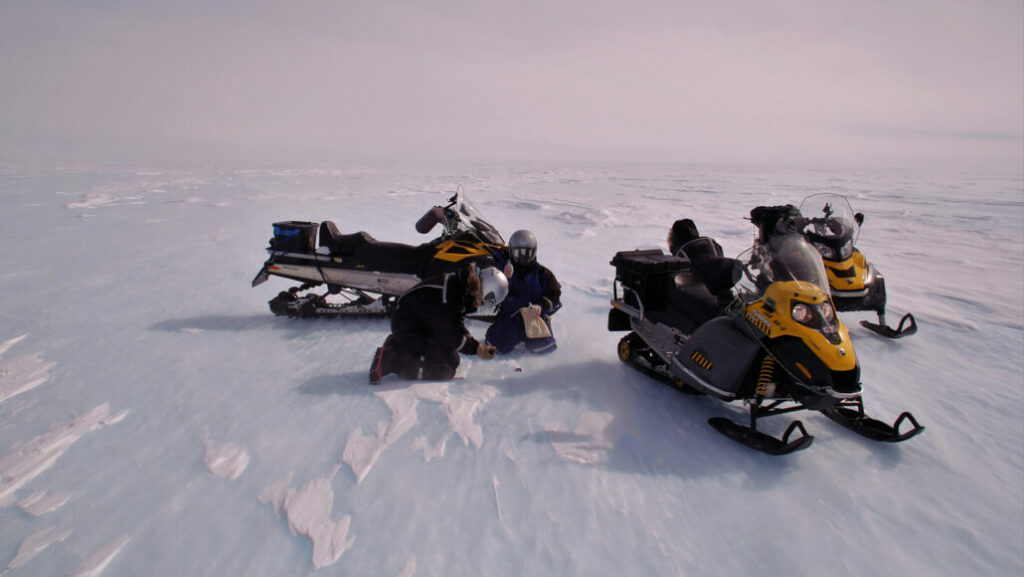
This next story, honestly, it is the kind of thing that could have been done by anyone with an amazing grasp of machine learning. Research in the journal Science Advances and led by Veronica Tollenaar reports that a new machine learning algorithm has identified more than 600 locations where ice movements in Antarctica may have piled up meteorites — meteorites scientists want to get their hands on so they can study the chemistry and geology of other worlds.
These space rocks are essentially free samples or at least free compared to the costs of launching a spacecraft to collect samples directly from asteroids.
While meteors streak through all the skies of our world, finding them in most places is exceedingly difficult because they are hard to distinguish from local rocks, and they can get lost in the foliage, buried over time, or they may just land in water.
Antarctica, with its amazing glaciers, collects meteorites on ice flows, and over time, can pile up rocks collected over the breadth of the continent into locations where the glaciers uplift materials or come to a melty end. The trick comes in finding these places, and while satellite data can be used, looking through all the images can be time-consuming.
So they trained a computer to do it by feeding the algorithm information on ice’s velocity, thickness, surface temperatures, and the shape of the bedrock below, and by showing it where known meteorite stranding zones are located. According to the release related to this work: To date, about 45,000 meteorites have been plucked from the ice. But that’s a fraction of the 300,000 bits of space rock estimated to lie somewhere on the continent’s surface.
Hopefully, with a new list of more than 600 places to search, these free space rock samples will be found a whole lot easier in the future.
Satellite imaging is becoming more and more important in helping us understand the dynamics of our world and even other worlds in our solar system. Mars, in particular, has come into focus, and its history is getting written one analyzed satellite image at a time. Up next, Beth Johnson looks at a new analysis of volcanism on Mars.
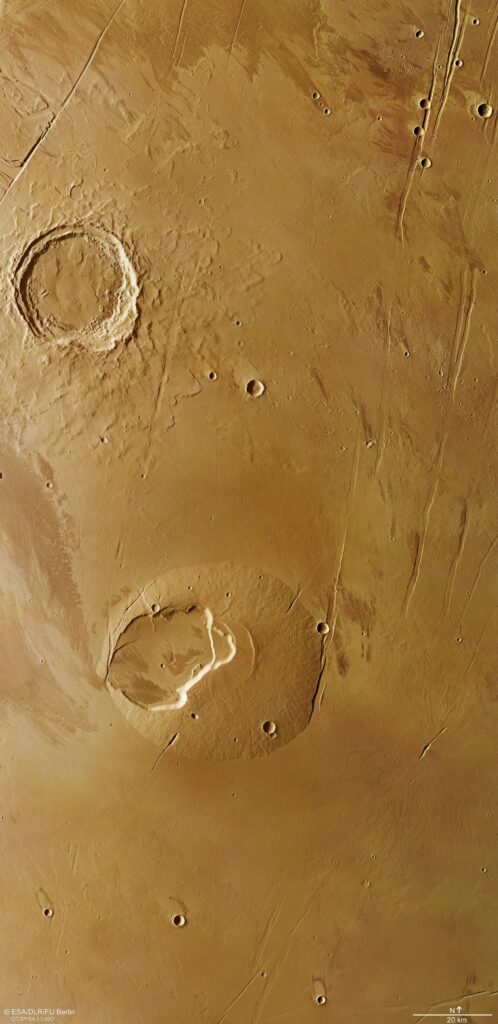
In a new image captured by ESA’s Mars Express, two craters are seen close to each other on the surface of the red planet, but they are of very different origins, which adds to the complex history of the world.
The northern crater is a meteor impact, about thirty kilometers wide. An asteroid or a comet hit the surface, breaking through several layers of rock. The floor of the crater is fractured, and the remains of liquid ejecta can be seen around the edge of the crater. The fact that the ejecta show evidence of being somewhat liquid at the time, while the crater is relatively small, means that there was likely water or ice saturating the ground at the location.
On top of that, there is an outflow channel that can also be seen to the northwest of the crater. That means water burst through the crater wall to form channel islands and terraces along the banks.
Now, I mentioned that there are two craters in this image, and the second one is interesting in a different way. That crater was caused by a caldera and can be seen cutting down into the gentle rise of an old shield volcano. This particular Martian volcano is named Jovis Tholus, and it’s much smaller than the more well know Olympus Mons.
But there are actually a series of caldera craters that move from the peak of the volcano down to the southwest, where the youngest and largest breaks through the outer edge of the volcano. That means we’re not seeing the original edge of the volcano because the lava would have spread all around it, covering that original relief. While it was probably much higher above the surface before the calderas collapsed and flooded the plains, the volcano only stands about 1 km above those plains.
The striking difference between the two formations is even more obvious when looked at in a color-coded topographic image, which we will also include in our show notes. There, you can see that the impact crater is definitely below the surface, while the volcano rises above it. And another interesting feature is revealed – the slight bulge of another, less developed volcano to the east of the visible one. There’s even a small fissure vent in the center, such as we find in Hawai’i or Iceland here on Earth.
Mars was once an incredibly active planet, bombarded with larger meteors and erupting from volcanoes. Those eruptions would likely have moved water from underground aquifers to the surface through all the various faults that volcanoes tend to create, giving the water easy access to an unfortunately light atmosphere that couldn’t hold the water in. We think.
Again, the water situation on Mars is still a bit murky, but every image helps us get closer to understanding the past and present of this red world.
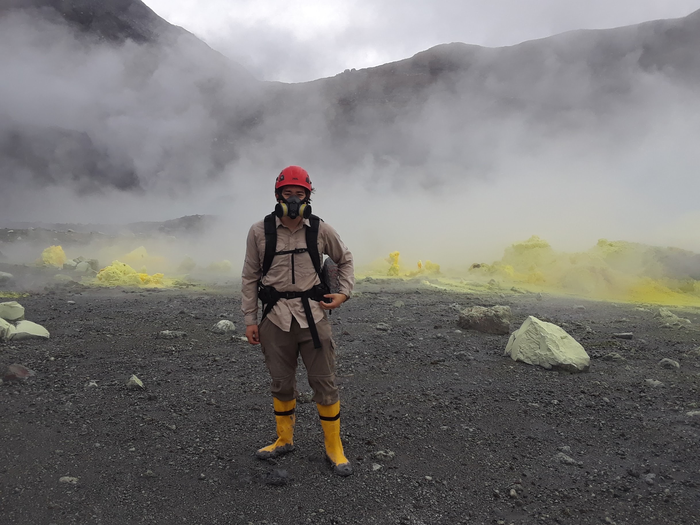
Also helping us understand the past of Mars, since we haven’t gone there with humans, yet, is studying what we call analog sites here on Earth – places that bear striking similarities to Martian landscapes or features.
In new research published in Frontiers in Astronomy and Space Science led by graduate student Justin Wang, a research team studied the Poás volcano in Costa Rica. The hydrothermal crater lake on the volcano is considered to be one of the most inhospitable locations on Earth, ultra-acidic, and full of toxic metals. The water temperature can range from pleasant and comfortable to, well, boiling.
Oh, and rock and ash explosions happen on a recurring basis. So really not good for life.
And yet. And yet, over the past ten years, they have found microbes living in the lake. In fact, while they only found one species there back in 2013, the 2017 visit revealed some biodiversity occurring.
A DNA sequencing of the organisms found biochemical capabilities that help them tolerate the conditions. Per the press release: These included pathways to create energy using sulfur, iron, arsenic, carbon fixation (like plants), both simple and complex sugars, and bioplastic granules (which microorganisms can create and use as energy and carbon reserves during stress or starvation).
Overall, this research provides another avenue to examine when it comes to Mars analog sites. Volcanoes may seem to be bad for life, but they actually aren’t.
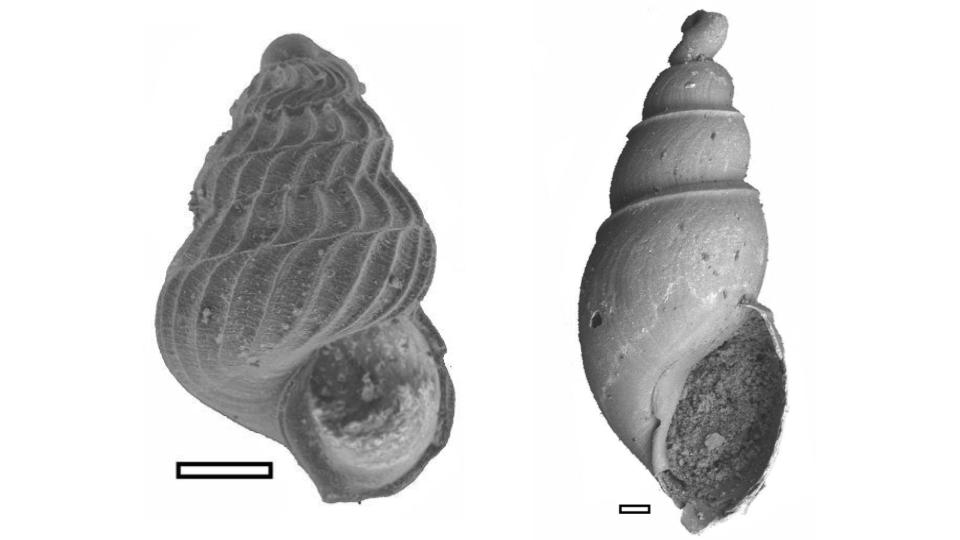
A lot of what allows us to understand Mars comes from research done trying to understand our planet Earth. And it’s not just Mars. Ocean researchers and Jupiter atmospheric scientists collaborate to try and figure out things like eddies that appear both in our oceans and Jupiter’s skies.
Where comparative planetology currently breaks down is where we here on Earth turn to lifeforms to help us understand our planet’s past. Tree rings for example: great for Earth, non-existent for Mars. And snails. Even the humble snail plays a role in understanding our world’s geophysical past.
The geologic record is plagued with mass extinctions scientists have to try and explain. In several cases, researchers looking at rocks had blamed ocean acidification events, but now other researchers have said, to paraphrase, But the snails don’t agree.
Here is the background according to a release related to this study: The world’s deadliest mass extinction wiped out about 90% of living species about 252 million years ago at the end of [the] Permian Period. The extinction was triggered by huge volcanic eruptions in present-day Siberia, which released large amounts of carbon dioxide into the atmosphere in a relatively short amount of time, causing rapid global warming.
And folks thought that carbon dioxide would acidify the oceans, but the snails don’t agree.
Researchers looking at 2,300 fossil shells from marine snails under microscopes didn’t find evidence, such as patched holes or damaged shells, that would indicate they lived in an acidic environment. So yeah, that theory is out the window. New theory time.
This work is published in Scientific Reports and led by William Foster with second author Jaime Hirtze who, I’d like to note, started this work as an undergraduate and just completed their master’s, 2,300 fossilized snail shells later.
The snails don’t lie.
We can learn a lot from animals.
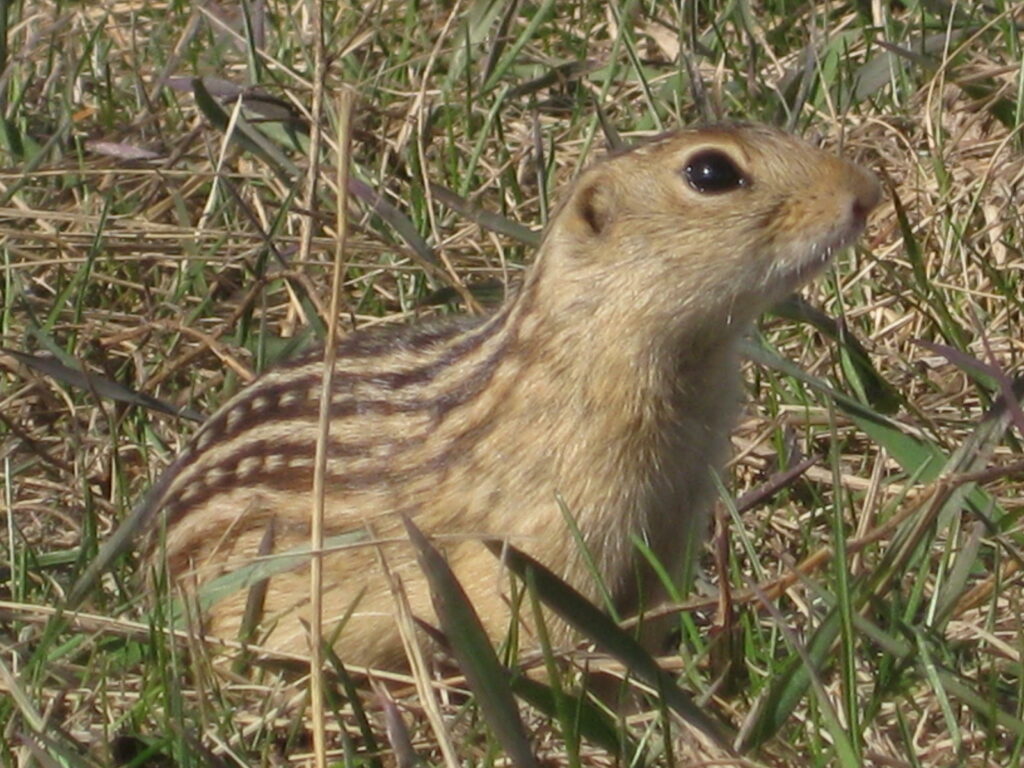
One of the major problems for humans as we take further and further trips into space is the tendency for the body to lose muscle mass in microgravity. Researchers at the University of Montreal think they have the answer, and it involves squirrels.
When squirrels undergo their yearly hibernation they do something fascinating. The microbes in their gut take the molecule urea, from urine, and split it into nitrogen. The nitrogen then gets passed back into the animal and is used to build and retain muscles. This way, the animal is prepared to engage in the high-energy period right after hibernation: the mating season.
This “urea nitrogen salvage” has been theorized since the 1980s, but a paper in Science by first author Matthew Reagan confirmed that it happens. Test squirrels were injected with modified urea in their blood. The modified urea had different markers that let the researchers track the urea nitrogen through different steps in the process.
The researchers did the experiment on squirrels with and without gut bacteria. They took data three times — when they were not hibernating, one month into hibernation, and finally four months into hibernation.
After months of data collection, researchers finally concluded that the squirrels were using urea nitrogen salvage, but importantly, only the squirrels with intact gut bacteria were. This told the researchers that the gut bacteria were responsible for the entire process because the squirrels themselves cannot do it.
Researchers had further insights — mainly that the urea nitrogen salvage process was most active in the latter part of winter, unlike most biological processes during an animal’s hibernation.
The third insight the researchers gleaned from the study is that the gut bacteria used some of the nitrogen they removed from the urea for their own purposes, demonstrating “true symbiosis”.
The researchers hope to find a way to apply this process to improve astronauts’ protein synthesis, which will benefit them in microgravity, instead of requiring lots of exercise as is the current process. The researchers cited an earlier study that showed the urea nitrogen salvage process was active in humans, but only for very small amounts of nitrogen.
Muscle wasting from a variety of causes is also a major problem on Earth, affecting almost a billion people globally. In the future, a medicine could be developed to give humans the gut bacteria used by the squirrels to promote urea nitrogen salvage and build their muscles. But, the researchers say all of these possible uses for the process are years into the future. As usual, further study is required.
This has been the Daily Space.
You can find more information on all our stories, including images, at DailySpace.org. As always, we’re here thanks to the donations of people like you. If you like our content, please consider joining our Patreon at Patreon.com/CosmoQuestX.
Credits
Written by Pamela Gay, Beth Johnson, and Erik Madaus
Hosted by Pamela Gay and Beth Johnson
Audio and Video Editing by Ally Pelphrey
Content Editing by Beth Johnson
Intro and Outro music by Kevin MacLeod, https://incompetech.com/music/


 We record most shows live, on Twitch. Follow us today to get alerts when we go live.
We record most shows live, on Twitch. Follow us today to get alerts when we go live.